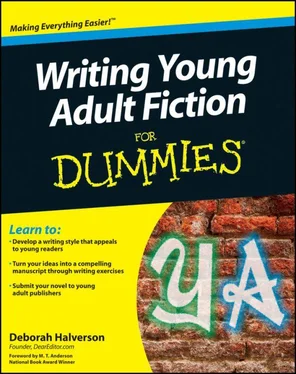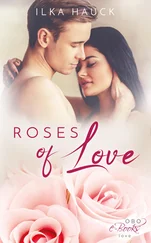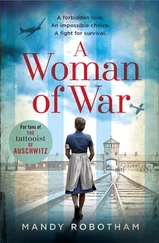Foolish Assumptions
Just as you make assumptions about your young readers, I’m making some assumptions about you:
 You want to be published.This is your first stab at writing fiction, and you need to know where to start. Or you’re a published writer in another category, and you want to try your hand at YA. Or perhaps you’ve been submitting your YA manuscripts but haven’t yet landed a deal, and you want to change that. Regardless of your experience level, your goal is to see your name on the cover of a printed-and-bound YA novel.
You want to be published.This is your first stab at writing fiction, and you need to know where to start. Or you’re a published writer in another category, and you want to try your hand at YA. Or perhaps you’ve been submitting your YA manuscripts but haven’t yet landed a deal, and you want to change that. Regardless of your experience level, your goal is to see your name on the cover of a printed-and-bound YA novel.
 You’ve got a story to tell.Ever notice how many people say they have a book in them? You’re one of them — only you’re ready to act, and you have an idea already in the chamber. All you need now is the know-how to develop it.
You’ve got a story to tell.Ever notice how many people say they have a book in them? You’re one of them — only you’re ready to act, and you have an idea already in the chamber. All you need now is the know-how to develop it.
 You want to be a better writer.Whether you’re a newbie needing the basics or a veteran writer aiming to brush up, you want techniques and tips that you can put to work immediately with tangible results — and you want those techniques broken down in a way that lets you apply them with your own personal flair.
You want to be a better writer.Whether you’re a newbie needing the basics or a veteran writer aiming to brush up, you want techniques and tips that you can put to work immediately with tangible results — and you want those techniques broken down in a way that lets you apply them with your own personal flair.
 You want to enlighten and entertain young people between the ages of 9 and 17.Young adults are still figuring out who they are and how this world works, and their novels play a part in their explorations. You want to contribute to their journey into adulthood — or at least make them smile as they forge onward.
You want to enlighten and entertain young people between the ages of 9 and 17.Young adults are still figuring out who they are and how this world works, and their novels play a part in their explorations. You want to contribute to their journey into adulthood — or at least make them smile as they forge onward.
If you see yourself anywhere in this list, then you’ll find the information in this book edifying and productive.
How This Book Is Organized
I’ve arranged this book in a logical sequence, leading off with an overview of young adult fiction’s unique marketplace and readership before jumping into the happy task of ushering you from your initial story idea through the development, submission, and promotion of your published novel. I provide exercises at every step so you can build your novel as you move through the book.
Part I: Getting Ready to Write Young Adult Fiction
Writers don’t just sit down at a computer and spit out the Great American YA Novel. They must plan, brainstorm, and analyze first. During your prewriting phase, you pinpoint your exact audience in the wide young adult age range, find an angle that makes your story stand out from the masses, prep your writing space so you can work efficiently and distraction-free, and discover what makes young adult literature so different from every other literary category out there — and why it’s so darn great.
Part II: Writing Riveting Young Adult Fiction
This part of the book helps you turn your ideas into a solid first draft by taking you step-by-step through the novel-development process. You shape your plot, sculpt believable characters, develop a convincingly youthful narrative voice and natural dialogue, and manipulate the setting to enhance all those elements. Along the way, you find techniques for connecting with an audience whose sophistication and maturity is in flux.
Part III: Editing, Revising, and Formatting Your Manuscript
Revising is writer’s jargon for the act of rewriting parts of your story — adding things to it, rearranging parts of it, and removing things altogether — all with the intent of transforming your solid-but-not-yet-perfected first draft into a seamless, flowing final draft. This part tells you how to effectively tackle the items on your revision list and experiment with fixes in a constructive, confident, and safe way. Find out how to assess what you’ve done, identify what needs fixing, make a plan for fixing it, and then successfully execute that plan. I break the process down into methods and the most common boo-boos in grammar, execution, and overall storytelling. After that, you get to polish the manuscript and make it pretty.
Part IV: Getting Published
This part is all about sharing your final manuscript with the world. I tell you how to find the right agent and/or editor for you, how to craft a professional and enticing submission package, and how to promote your novel after it’s published. I also demystify self-publishing so you can decide whether it suits your needs and situation better than traditional publishing.
Part V: The Part of Tens
Everyone loves lists, and the For Dummies people are no exception. In keeping with their tradition, I include a Part of Tens with lists that warn you about the most common pitfalls in writing young adult fiction, answer the most common publishing contract questions, and prep you for writers’ conferences so you can get as much out of the experience as possible.
Icons Used in This Book
These five icons are sprinkled throughout this book to highlight information that deserves special attention.
 This icon flags great strategies for employing the technique at hand or enhancing a particular aspect of your writing or story. Tips may save you time or help you come at something from an angle you hadn’t considered. Try them out.
This icon flags great strategies for employing the technique at hand or enhancing a particular aspect of your writing or story. Tips may save you time or help you come at something from an angle you hadn’t considered. Try them out.
 This icon means you’re getting a heads-up about something you should keep in mind as you read onward.
This icon means you’re getting a heads-up about something you should keep in mind as you read onward.
 Red alert! Every activity has its trouble spots, and writing and publishing for young adults is no different. Spare yourself confusion, dead ends, and wasted effort by heeding these words of warning.
Red alert! Every activity has its trouble spots, and writing and publishing for young adults is no different. Spare yourself confusion, dead ends, and wasted effort by heeding these words of warning.
 This is extra in-depth stuff that you don’t have to read in order to write and publish successfully… but it’s cool to know if you feel inclined to linger.
This is extra in-depth stuff that you don’t have to read in order to write and publish successfully… but it’s cool to know if you feel inclined to linger.
 Look for this icon when the writing bug bites or when writer’s block descends. The text next to this icon gives you some direction for putting my tips and tricks into practice.
Look for this icon when the writing bug bites or when writer’s block descends. The text next to this icon gives you some direction for putting my tips and tricks into practice.
Where to Go from Here
I’ve done my best to organize this book so you can give it a thorough read if you’re new to YA fiction and to writing in general. Or you can dip in and skim if you’re just trying to brush up. The choice is up to you now.
If you’re new to YA fiction, spend some time with the prewriting chapters in Part I to get to know your special audience and the categories and genres that define YA lit. If you’ve been in the YA realm awhile, you can dip into the craft chapters as needed to buck up skills that need bucking and to remind yourself of what you already knew but lost sight of — a common happening for writers, who must balance so much.
I’ll send you into the book proper by telling you the same thing I tell all the writers I edit — bestsellers and newbies alike — and all the writing students I’ve ever taught: Be open and be willing to experiment. Writing is not about applying formulas, no matter how many checklists and step-by-steps I give you. The magic happens when you let your hair down and go beyond the formulas. Try new things. Do what you never thought you’d do. Let the “rules” and formulas anchor you, yes, but then get funky from there. This is YA fiction, after all, and Rule No. 1 for teens is that rules are made to be broken.
Читать дальше
Конец ознакомительного отрывка
Купить книгу

 You want to be published.This is your first stab at writing fiction, and you need to know where to start. Or you’re a published writer in another category, and you want to try your hand at YA. Or perhaps you’ve been submitting your YA manuscripts but haven’t yet landed a deal, and you want to change that. Regardless of your experience level, your goal is to see your name on the cover of a printed-and-bound YA novel.
You want to be published.This is your first stab at writing fiction, and you need to know where to start. Or you’re a published writer in another category, and you want to try your hand at YA. Or perhaps you’ve been submitting your YA manuscripts but haven’t yet landed a deal, and you want to change that. Regardless of your experience level, your goal is to see your name on the cover of a printed-and-bound YA novel. This icon flags great strategies for employing the technique at hand or enhancing a particular aspect of your writing or story. Tips may save you time or help you come at something from an angle you hadn’t considered. Try them out.
This icon flags great strategies for employing the technique at hand or enhancing a particular aspect of your writing or story. Tips may save you time or help you come at something from an angle you hadn’t considered. Try them out. This icon means you’re getting a heads-up about something you should keep in mind as you read onward.
This icon means you’re getting a heads-up about something you should keep in mind as you read onward. Red alert! Every activity has its trouble spots, and writing and publishing for young adults is no different. Spare yourself confusion, dead ends, and wasted effort by heeding these words of warning.
Red alert! Every activity has its trouble spots, and writing and publishing for young adults is no different. Spare yourself confusion, dead ends, and wasted effort by heeding these words of warning. This is extra in-depth stuff that you don’t have to read in order to write and publish successfully… but it’s cool to know if you feel inclined to linger.
This is extra in-depth stuff that you don’t have to read in order to write and publish successfully… but it’s cool to know if you feel inclined to linger. Look for this icon when the writing bug bites or when writer’s block descends. The text next to this icon gives you some direction for putting my tips and tricks into practice.
Look for this icon when the writing bug bites or when writer’s block descends. The text next to this icon gives you some direction for putting my tips and tricks into practice.










